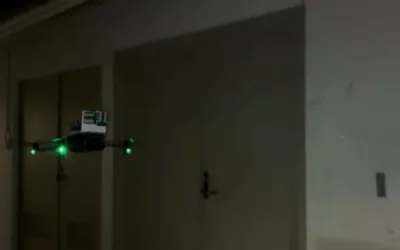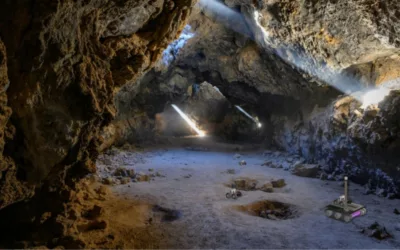The global transition towards renewable energy sources has led to the proliferation of solar farms, generating clean and sustainable electricity. As these solar installations continue to expand, so does the need for efficient management of their surrounding landscapes. In this article, we explore how robotics can play a pivotal role in optimizing the maintenance, monitoring, and ecological balance of solar farm environments, ensuring their long-term sustainability and productivity.
Precision Maintenance and Inspections
Robotic technology offers unprecedented precision and efficiency when it comes to the maintenance and inspection of solar farm landscapes. Drones equipped with high-resolution cameras and thermal imaging sensors can autonomously monitor the condition of solar panels, detecting potential defects, and identifying areas in need of repair. This proactive approach not only reduces the downtime associated with manual inspections but also ensures optimal energy generation by promptly addressing issues such as dirt accumulation or damaged panels.
Vegetation Management
Effective vegetation management is crucial for maintaining the performance and safety of solar farms. Traditional methods often involve manual labor and the use of herbicides, which can be time-consuming and potentially harmful to the environment. However, robotics offer innovative solutions for automated vegetation management. Autonomous robotic mowers like Renu Robotics’ Renubot can efficiently trim grass and control weed growth, ensuring optimal sunlight exposure to the panels while eliminating the need for harmful chemicals. These robots can navigate the farm terrain with precision, adapting to different weather conditions and operating autonomously or remotely controlled.
Environmental Monitoring and Conservation
Maintaining a healthy ecological balance around solar farms is vital for biodiversity conservation and sustainable land use. Robotics can significantly enhance environmental monitoring efforts in these areas. Equipped with sensors and cameras, robots can collect data on factors such as air quality, soil moisture, and wildlife activity. This real-time information enables solar farm operators to identify potential environmental risks and make informed decisions to minimize impacts. Furthermore, autonomous drones can survey and map the surrounding areas, helping to assess habitat quality, identify conservation opportunities, and design effective wildlife corridors.
Energy Efficiency Optimization
Efficient energy management is crucial for solar farms to maximize their output and minimize operational costs. Robotics can contribute to energy efficiency optimization by autonomously adjusting the positioning of solar panels to track the sun’s movement throughout the day. These tracking systems ensure panels are always oriented for optimal energy absorption, significantly increasing the overall energy yield. Additionally, AI-powered algorithms can analyze weather data and predict solar irradiance patterns, enabling intelligent energy load balancing and enhancing grid integration.
Safety and Security
Ensuring the safety and security of solar farms is of paramount importance. Robotic technology provides valuable support in this regard. Drones equipped with advanced surveillance systems can monitor the perimeter of the solar farm, detecting and responding to potential intrusions or security breaches promptly. Furthermore, autonomous robots equipped with fire detection sensors can detect and extinguish potential fire hazards, minimizing the risk of damage to the solar farm and surrounding ecosystems.
As solar farms continue to expand and evolve, the integration of robotics emerges as a transformative force in the management of their surrounding landscapes. Through precision maintenance, efficient vegetation management, environmental monitoring, energy optimization, and enhanced safety and security measures, robots are revolutionizing the way solar farms operate. By leveraging the power of automation and AI, these technologies enable increased productivity, reduced costs, and improved sustainability. Embracing robotics in solar farm management not only enhances the performance and lifespan of these installations but also contributes to a cleaner and more efficient renewable energy future.








